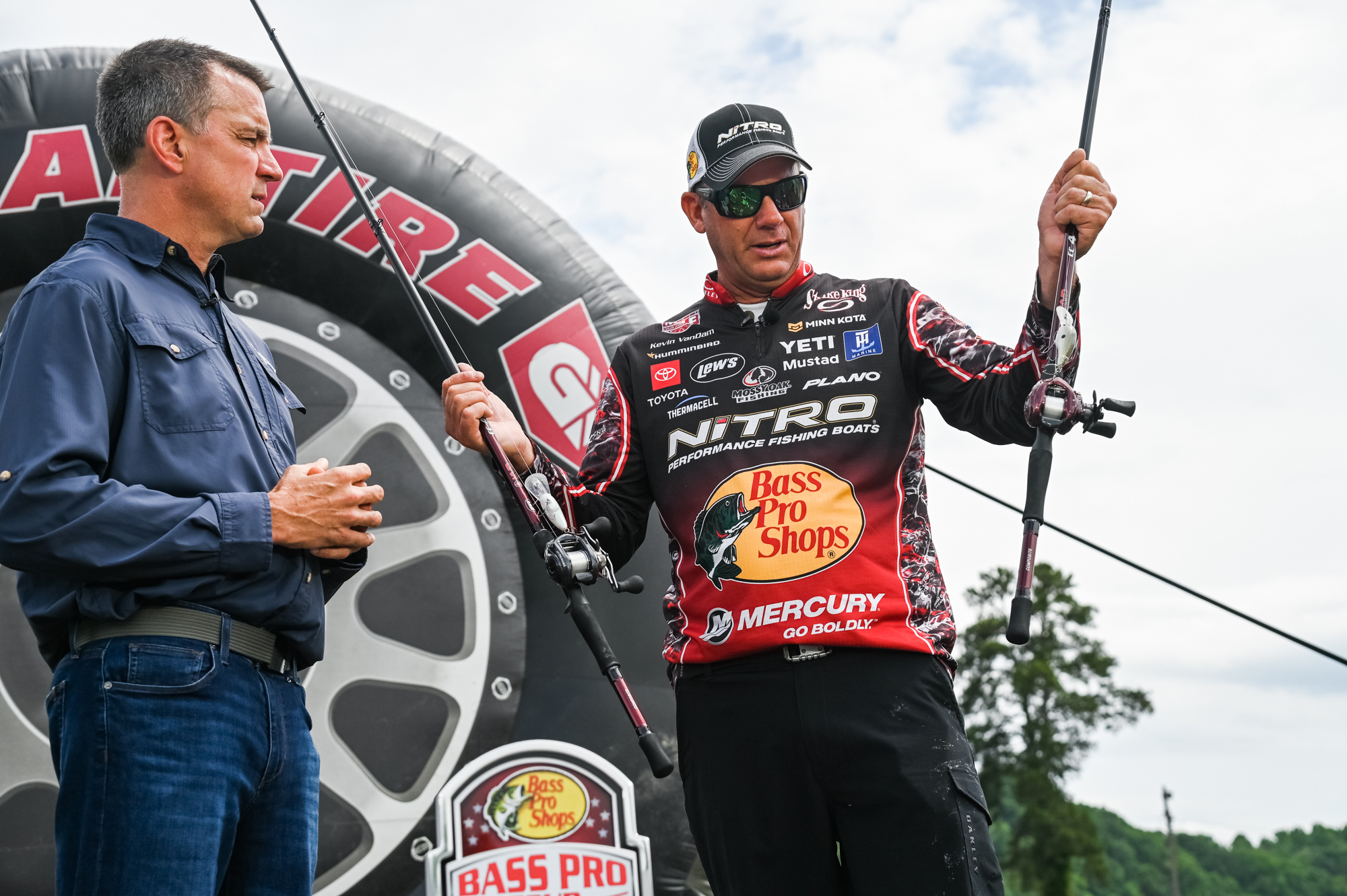KEVIN VANDAM: ‘It’s the most wonderful time of the year’

I know, the above is a title to a Christmas song meant for the holiday season. But when the calendar turns to May, I can’t help humming the tune in my head. Don’t get me wrong, I like the holidays, but when it comes to bass fishing, right now is the most wonderful time of the year.
The postspawn reset
It’s no secret that postspawn is my favorite time of the year. I like it the most because once the fish are done with the distractions of spawning, they leave the shallows and flats and return to offshore haunts to do one thing — EAT!
They’re no longer worried about making beds, courting other bass, defending beds or guarding fry. They’re no longer being bombarded with lures in the shallows while they’re spawning. While in transition, they get a little recovery time — a little rest and a reprieve from lures. Then they head out to deeper territory and are 100% focused on feeding. That transition is a complete reset before the offshore melee begins.
When bass first show up on offshore feeding spots, it’s like they’re untapped, willing and eager to bite. At this point, it’s possible to find some of the largest schools of the year. You can literally catch dozens of bass in a row and compile a 25-pound limit in a matter of minutes, depending on the lake.
I believe at this time of year, bass tolerate each other’s presence better than any other time of year. Even though they’re still competitive, they work together like sharks to corral bait — usually shad or bream. Small wolf packs of bass will join forces to create big mega-schools. Searching for these mega-schools off the beaten path is the pinnacle of bass fishing for me. It’s like a treasure hunt.
Finding a fresh mega-school on an obscure ledge, break or hump makes all the hours of searching, winding and grinding worth it. To find these unpressured places, I use Humminbird LakeMaster mapping, which is the best underwater digital mapping available. The goal is to steer clear of the obvious, well-worn community holes that show up on all mapping, and instead, study the LakeMaster maps closely to find subtle contour changes and subtle corners or notches in the ledges that other mapping doesn’t show. LakeMaster shows places where the contours tighten or broaden, ever so slightly, indicating something different.
I’ll then make a few passes with Humminbird’s MEGA Side Imaging to scan these irregularities for green gold. If I happen to see “coins” on my Apex screen while scanning, it’s time for my favorite part of the hunt — digging up the gold with a crankbait.

School management
The Strike King 6XD is one of my favorite cranking series of all time. When I crack a fresh school of hungry, postspawn bass with a 6XD, there’s nothing else like it in fishing. The power and the fury of that bite is full send.
My favorite part of the cranking game in the postspawn is to see how long I can keep a school fired up and how many I can catch out of it. This comes down to straight efficiency. The moment I get the first bass hooked in a school, the clock is ticking in terms of how quickly I can cast back out there to get another one. It’s imperative to get the fish in the boat — weighed, culled, released, etc. — and get right back out there as fast as possible. This is no time to be digging around for lures, retying knots, taking pictures, or sending selfies. That school will only be fired up for a few precious minutes.
If the water is clear, the time is even shorter. Clear water schools loosen up and fall apart much faster than schools in dingier water. This is why I have some 25 to 30 rods on the deck, locked and loaded, ready to be deployed immediately. If my lure fouls or I feel a fray in my line after a fish catch, this is no time for fixing it. I have duplicates of my primary postspawn lures ready to fire right back out there.
If I catch a few fish on one particular lure and I feel like they’re getting wise to it, or the school is getting busted up, I’ll often begin fishing through my ledge lineup of lures. One of my favorite tricks when cranking is to go to a 6XD silent model to catch a couple more on a crankbait. Then I might go to a Sexy Spoon or a hair jig. From there it’s usually a big Texas-rigged Zeus Worm or a Tour Grade Football Jig. My favorite cleanup bait is a Bull Worm on a ½-ounce Tour Grade Mag Jighead.
Understanding how long it takes schools to set back on a place is another critical element of the postspawn game that varies from lake to lake. Sometimes the big schools never get back together as one, but instead, break up into smaller schools that fracture off onto smaller features along the ledge. This is when it becomes necessary to beam them with my Mega Live forward-facing sonar to target the smaller pods of fish more precisely and efficiently.
As you might have guessed by now, I’m pretty fired up for the month of May and the postspawn. Thankfully, our next Bass Pro Tour event is on Lake Guntersville, where the fish should be setting up in full-blown postspawn mode. Guntersville has changed a lot in recent years with the influx of eelgrass, but it’s still a Tennessee River impoundment where bass move offshore after the spawn to eat during the most wonderful time of the year.